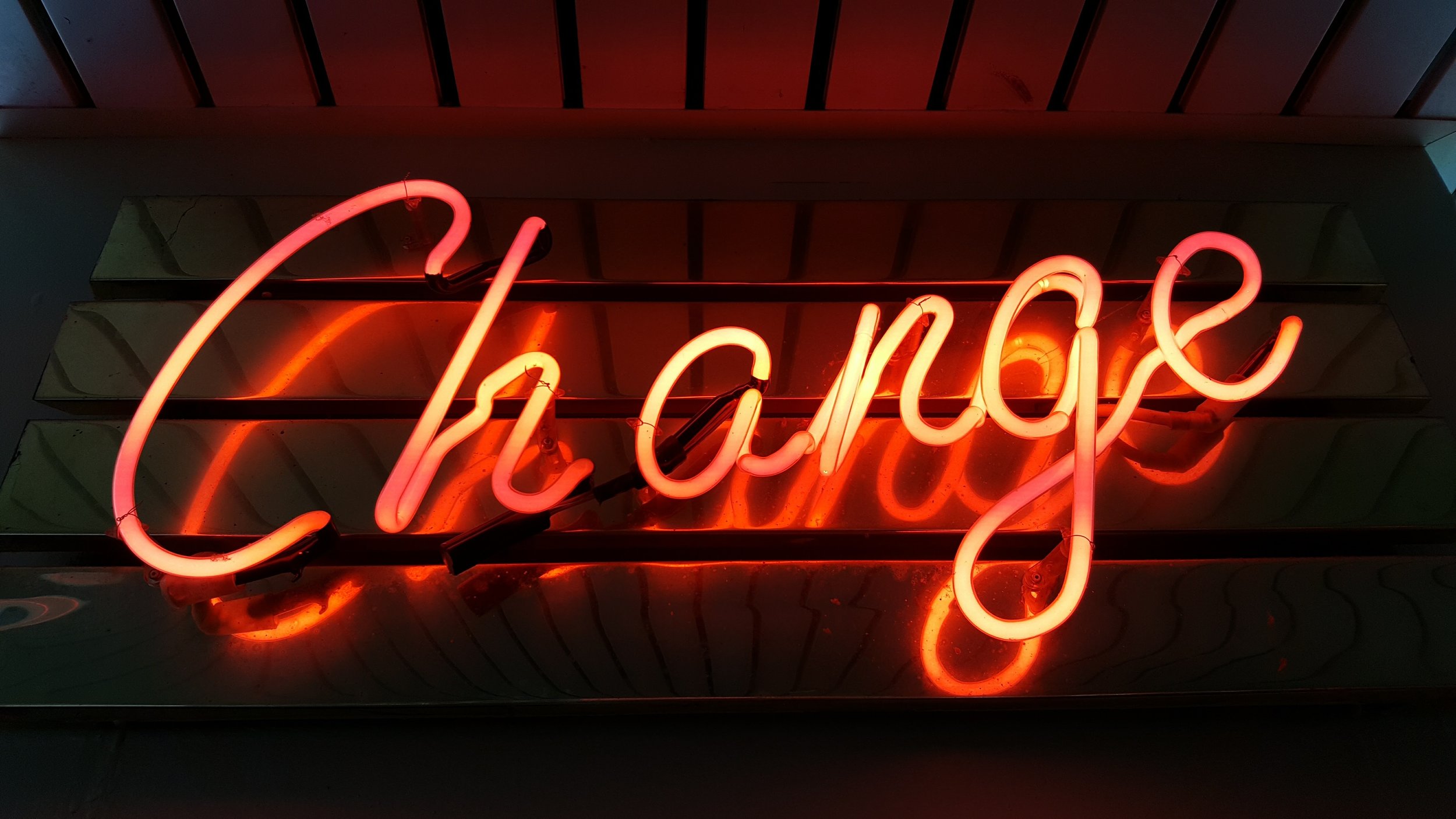So, you wanna change? Part 1
As a coach, I help people change.
Sometimes because they want to.
Sometimes because they have to.
Some people love change and seek it out willingly. They often hire a coach to expedite and/or deepen their change journey.
Some people avoid change at all costs and put all their energy into staying the same. That’s cool.
And, some people have a big doozy of a thing dropped into their lives and they have no choice but to deal with it, and in so doing, they discover who they are through the process of rising to the challenge of change. That’s magical! (and a coach can help with that too!)
If you want to change something in your life, there are a few basics that I use when working with clients. Here they are!
Positive Motivators
Some people who want to change something in their lives — a habit, a belief, how they look, how they feel — are motivated by positive factors or influencers. These are the people who are spurred into action by what might be, by what’s possible, and by celebrating the progress along the way, as well as the final achievement of the goal. They tend to have a positive, appreciative, reaffirming outlook on life. Sound like you?
A few tools that can help these kinds of people in their change efforts are:
Visioning
Painting a vivid picture of what will be in the future is a powerful way to see the change you want, and keep motivated to make it real.
The more concrete, the better.
For someone who wants to improve their health, a vision that includes specifics (such as blood pressure of 120/60, sound sleeping for eight hours per night, able to lift 100 lbs without injury, eat a vegetarian diet five days per week, etc.) is more alive than the vague notion of “be healthier.” This is why vision boards are so popular and helpful — selecting and posting images of the future log in your brain, since humans are so visually-motivated.
Using all five senses, plus your desired emotional state, to design a vision is crucial to making it real in your mind, which will then lead to it being real in your life. And, specifics make it easier to measure progress, which brings me to…
Measurement and Celebration
Many people are motivated by achieving goals, even very small goals that move them toward a larger goal.
Take a runner, for example: When first learning to run, they may be able to run only one minute at a time. That was me, many moons ago. As they train and practice and develop the skill of running, the length of time and the distance they can run increases.
Back in the day, I ran a half-marathon. For several months, I trained as part of a group program that had weekly increases in distance, along with other skill-building drills, and we celebrated our accomplishments along the way.
This positive reinforcement kept our spirits up and kept us motivated through the heavy slogging toward that goal of running 21.1 km, and you can bet that we celebrated the day we successfully crossed the finish line.
This tactic is why some weight-loss, strength-building or other physical change programs work — there are measurements taken at regular intervals that celebrate accomplishment and motivate you to keep on track.
A word of caution: The key is finding measurements and celebrations that are meaningful and motivating to YOU, otherwise you may get into a comparison game. “Ugh, I’m not gaining muscle as quickly as Sara…I suck.” Not so helpful. Comparison, in the form of healthy competition, can be a motivator, but it can be a fine line — stay aware to it.
Negative motivators
Some people are motivated by negative factors. They are fed up with the way things are and want to create something different.
Anyone ever said, “I hate my job” or “My home is so dreary” or “This relationship sucks”?
In these cases, the motivation is to get away from, rather than move toward, something. That’s not to say you don’t want to move toward something — it’s just that the motivation is coming from a thing or situation that is negative, or dissonant to you.
Some tools that can help create change in these cases are:
Visioning (surprise!)
Creating a vision for the future that is NOT what the current (negative) state is can be super motivating. Sometimes, it’s easier to create a solid vision when you have something with which to contrast it.
NOT THIS (current sucky state), but THIS (future rainbows and butterflies state)!
A great way to create this vision in a concrete way is to grab a piece of paper, draw a line down the middle and make a list describing the current state on one side, and then one describing the ideal state on the other. Again, use your five senses and emotional impact of each state in your descriptions. Make it real.
Visioning Bonus Tip:
The way to really make a vision stick is to consider and describe the impact that vision will have on you or the world.
“When I’m in my dream job, and not this dead-end soul-draining place, I’ll feel valued and fulfilled. I’ll be excited to get to work every day. I’ll be doing my best work as a ________ to positively impact the world.”
For many people, the “what” of the vision isn’t quite enough…you’ll need to connect to the impact of the “what” — How will you feel? What will be different in the world because of the new state? Be sure to spend as much time (if not more) on the impact your vision will bring to your life.
Feel the Pain
Another way to use a negative motivator to instigate change is to really feel the pain of it. (Obviously, if you are in a dangerous/unsafe home/job/relationship, please don’t seek out more physical or emotional pain. Please get help from local authorities, a support line, OH&S committee, trusted friend or family member.)
If you hate your job, for example, when you get up in the morning (or whenever you prepare to go to work), take a moment to be with how you feel as you get ready.
What thoughts and emotions are moving through your mind and body, or collecting there?
How do you have to bolster yourself mentally to walk into that workplace?
What parts of yourself do you hide or protect while there?
What physical toll is that situation taking on your body?
What toll is it taking on your mental health?
How much are you spending on stress-relieving remedies because of this job?
Sit in the ickiness of the situation, and let those yucky feelings and costs motivate you to move toward something better.
Think about the #metoo movement: Women got fed up with the way things are. Women allowed their anger, disgust, discomfort, pain, rage fuel their voices and actions to create awareness, to create a new and better way, to create change. Think about Truth and Reconciliation. Think about Black Lives Matter. Think about any bad, horrible, disgusting thing that has happened in the world, or in a single life, that someone decided was not cool, and said, “Not on my watch.”
What about your life (or the world) are you sick and tired of and ready to choose or create something different?
In my next post (Part 2), I’ll share some insight on the speed of change.
Let me know what you think!
What other positive or negative motivators do you rely on or see at play in the world?
Share below or on my Facebook page.
Want some help to change something in YOUR life? Contact me to learn how!
XO,
Jilly

